We may receive a commission when you use our affiliate links. However, this does not impact our recommendations.
This week I’m finishing up work on an aumbry for a future issue of Popular Woodworking Magazine. More than anything, this project has been about exploring Gothic geometry. But as with any project, I always have a lot of detours and dead ends.
The pierced carvings on the front of the aumbry are fairly simple, yet I was afraid they would be off-putting for some beginning woodworkers. So I started investigating the amazing geometrical world of Gothic tracery. With a compass and a straightedge, you can draw almost anything in the Gothic lexicon.
I went a bit nuts with it for a couple days.
If you study the plates included with this entry, you can see how almost all of the Gothic forms flow from a square, circle or equilateral triangle. After drawing out several dozen lancet arches (easy), I decided to put a pierced form in the center of the door that is based on a triangle. You first draw the equilateral triangle on the work. Then you drill a hole at each vertex that has a diameter equal to each segment of the triangle.
(In English: drill a hole at each corner of the triangle. The bit’s diameter should be equal to the length of one of the legs of the triangle.)
The three holes end up tangent to one another – and a middle triangular section of waste falls away. Then you can shape the edges of the piercing with a router. I experimented with a bunch of bits to try to create different effects. The best was a small chamfer, which I guided with a bearing on the rim of the piercing.
After making a few test pieces, I made the piercing in the finished door of the aumbry. I took a step back and said to myself: It looks like a gambler’s door. The piercing looked too much like the suite of “clubs” in playing cards.
So I set the door aside and made all the pierced carvings the hard (but fun) way. With a chisel and rasp.
— Christopher Schwarz
Here are some supplies and tools we find essential in our everyday work around the shop. We may receive a commission from sales referred by our links; however, we have carefully selected these products for their usefulness and quality.



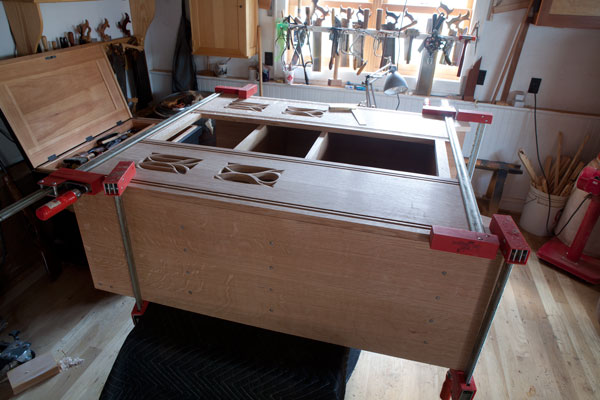
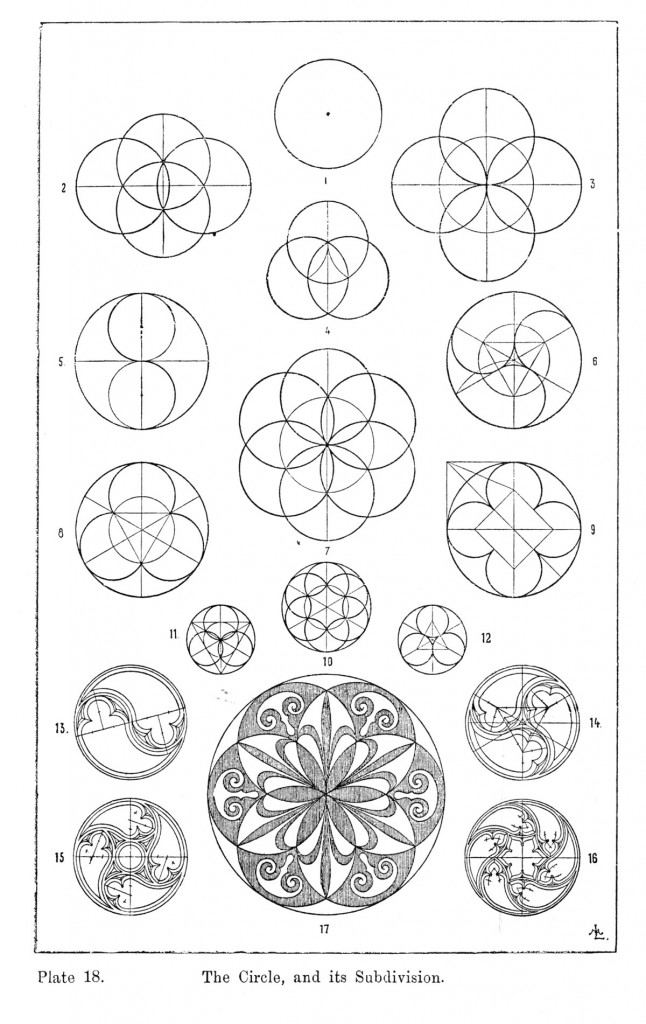
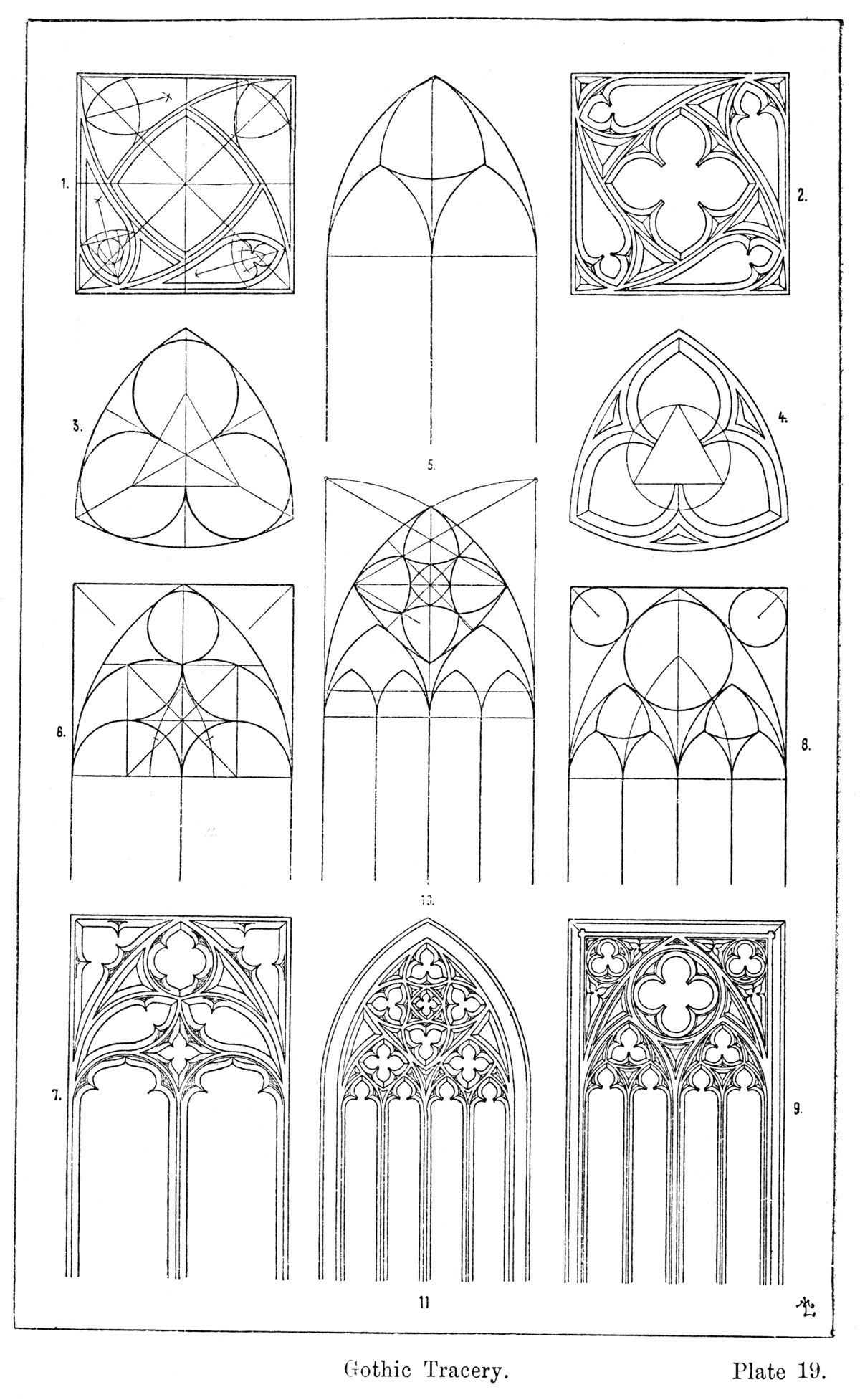
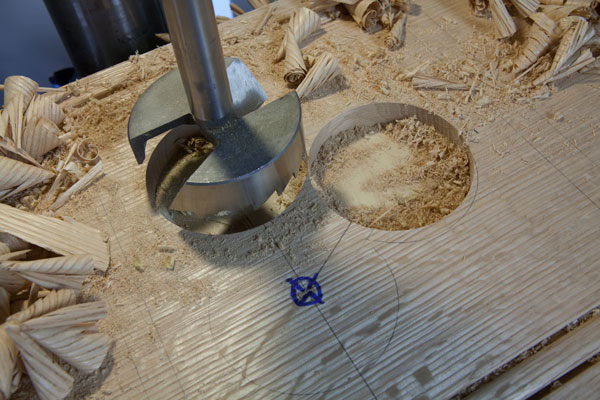
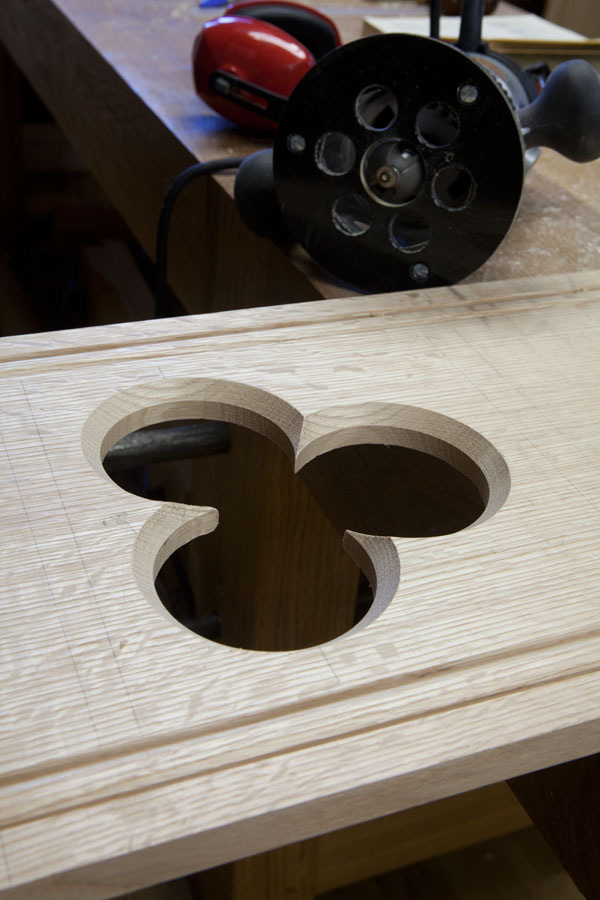






Thank you for the information. I will gladly take advantage of those resources.
Hello Chris,
May I also recommend the title Sacre Geometry by Mirandda Lundy. This short book (50 pages or so). She provides descriptions for trefoils,quatrefoils and lancet arches among other archetectural details.
Combining this approach with a simple six-cut chip carving technique brings even the more complicated designs within reach of most woodworkers. Inside corners on chamfered work can be finished off with chisels (as opposed to gouges required for coved work) keeping the project accessible for those with more limited tool kits. All in all, it is a good introduction to carving techniques for those intimidated by the prospect. Oak will give you a lesson on carving with the grain.
Thats really beautiful stuff !!
If you add the outline tracery as shown in items 3. and 4. on Plate 19, with a 90 deg vee bit, you get away from the “Gambler’s Club Door” and more of a Gothic look. Carving a recess between the outline and the flat vee shaped space between circles as in item 4. makes it even more Gothic. I like the simplicity of the chamfer, but a cove bit looks nice, too. Looks like a challenging project in quartersawn white oak. What are you using for a finish?
You should also have used the chisel to give that router the “Three Blind Mice” treatment.
From which book are those plates? I’ve always been interested in gothic furniture. I’m looking forward to the article.